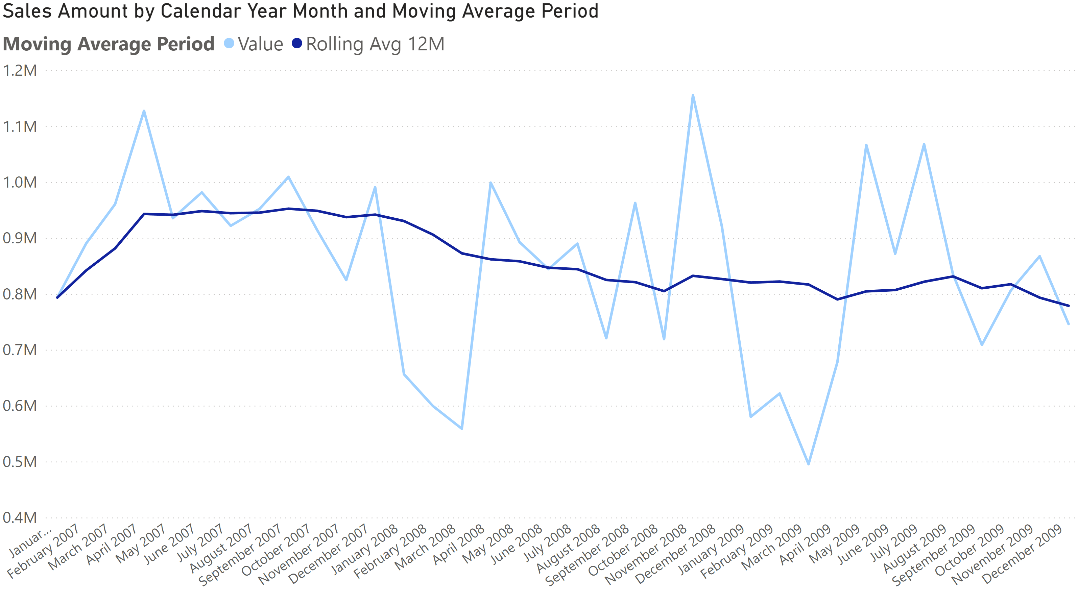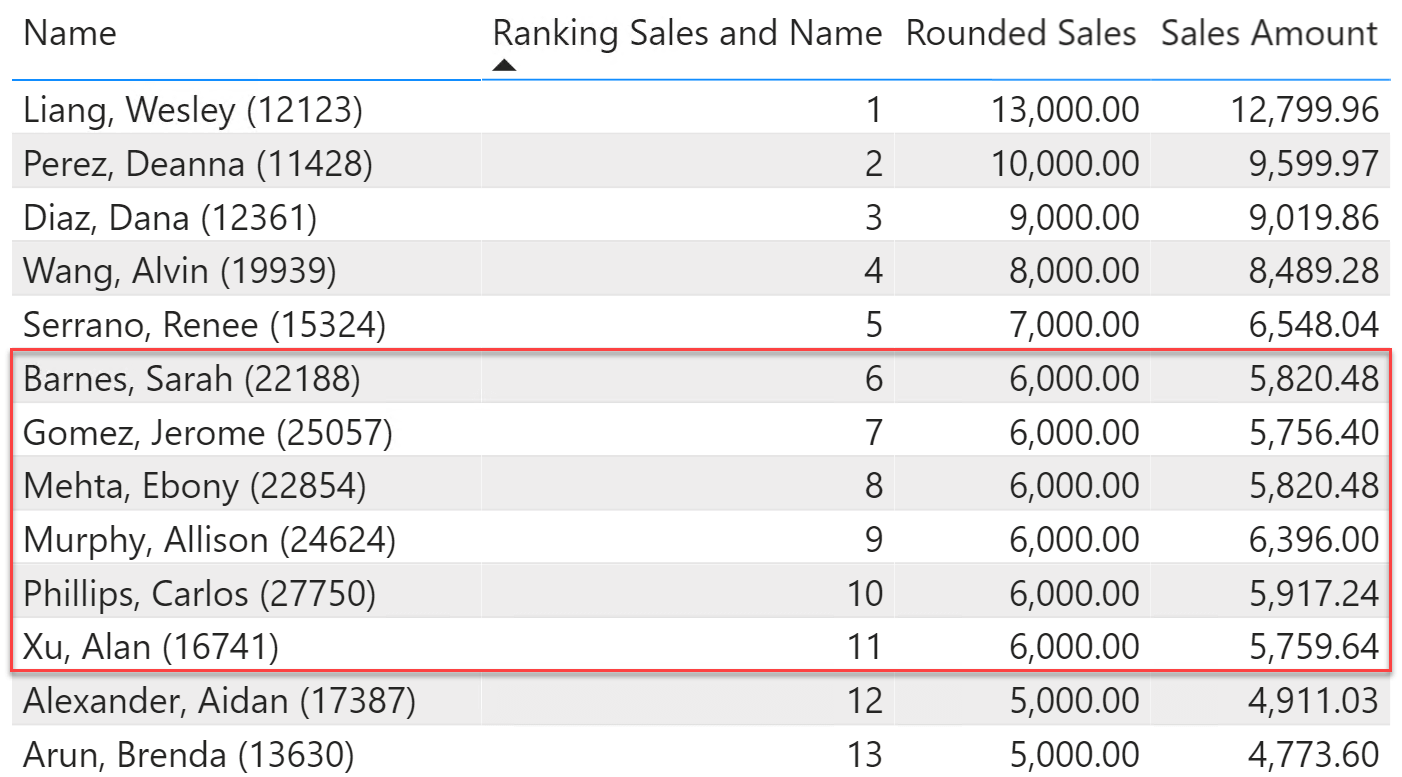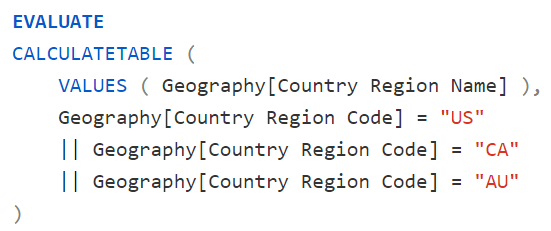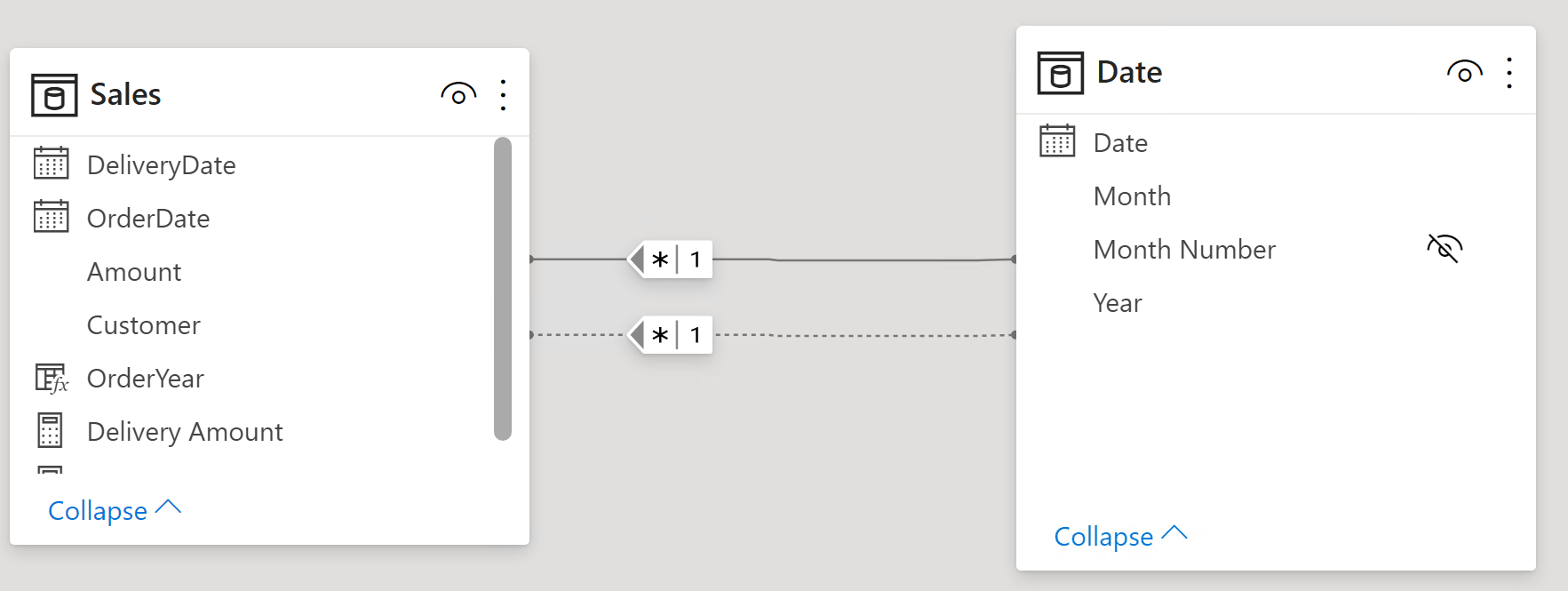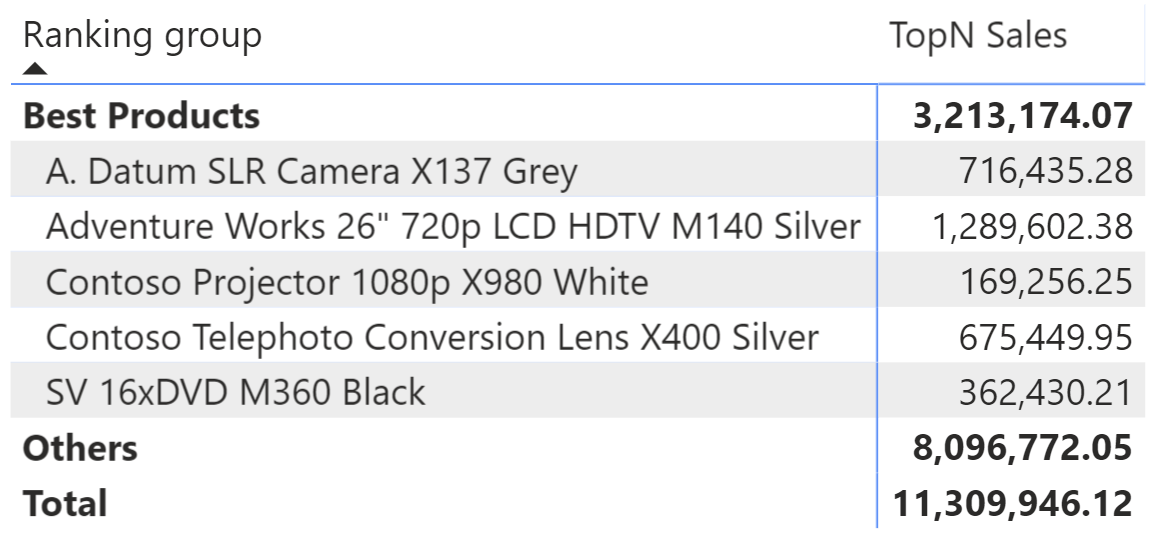Topic: DAX
-
In this article we demonstrate how to use calculation groups to show the behavior of any measure in the last 6 months, starting from a single date selection with a slicer. This can be applied to any number of months. Read more
-
This article introduces the new DAX syntax (March 2021) to support CALCULATE filter predicates that reference multiple columns from the same table. Read more
-
Rolling averages over time (a.k.a. moving averages or running averages) are useful to smoothen chart lines and to make trends more evident. This article shows how to compute a rolling average over 12 months, in DAX. Read more
-
This article shows techniques to obtain a ranking based on more than one column. The ranking can be both static and dynamic. Read more
-
The SQL functions IN and EXISTS are useful to implement tests over a set of values. This article describes the corresponding syntax in DAX language. Read more
-
USERELATIONSHIP lets you temporarily change which relationship is active. Even though USERELATIONSHIP is easy to work with in measures, it can be challenging and give you inaccurate results when used in calculated columns. In this article, we describe the details… Read more
-
This article explains how to avoid circular dependency errors that can occur in DAX when two or more entities (calculated columns or calculated tables) reference one another in such a way that the engine cannot compute their value. Read more
-
This article shows how to add an additional “other” row to the selection obtained using the Top N filter in a Power BI report. Read more
-
Power BI and Analysis Services are case-insensitive by default.Lowercase letters are identical to uppercase letters.This is mostly a good choice, but it also comes with unexpected consequences. In this article, we run through a set of queries to understand what… Read more
-
This article explains the most common causes of the error, “A circular dependency was detected” in Power BI and Analysis Services. Read more


